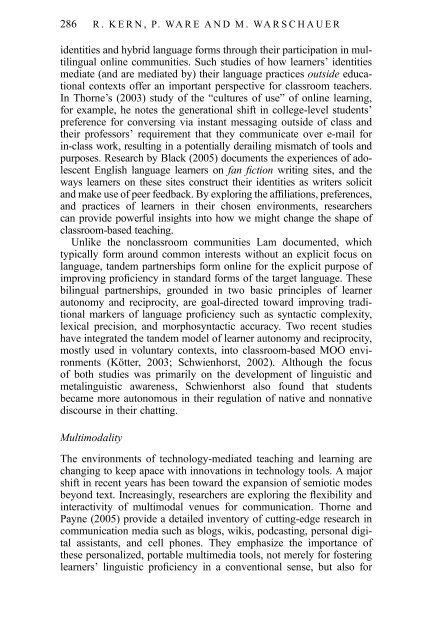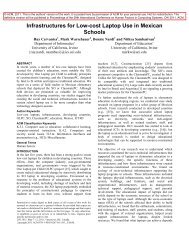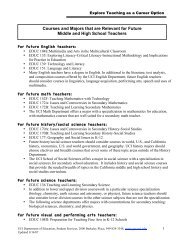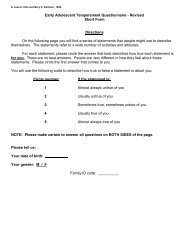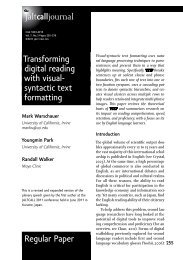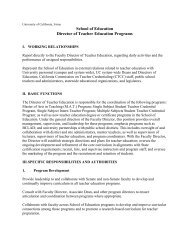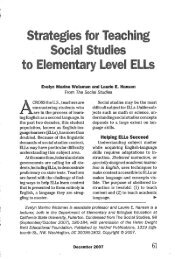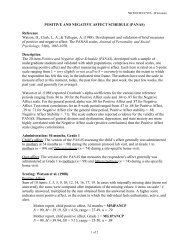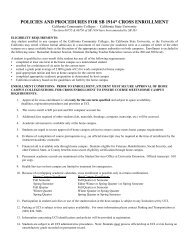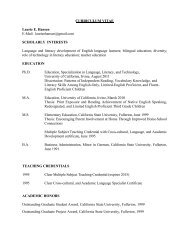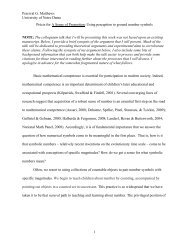NETWORK-BASED LANGUAGE TEACHING
NETWORK-BASED LANGUAGE TEACHING
NETWORK-BASED LANGUAGE TEACHING
Create successful ePaper yourself
Turn your PDF publications into a flip-book with our unique Google optimized e-Paper software.
286 R. KERN, P. WARE AND M. WARSCHAUERidentities and hybrid language forms through their participation in multilingualonline communities. Such studies of how learners’ identitiesmediate (and are mediated by) their language practices outside educationalcontexts offer an important perspective for classroom teachers.In Thorne’s (2003) study of the “cultures of use” of online learning,for example, he notes the generational shift in college-level students’preference for conversing via instant messaging outside of class andtheir professors’ requirement that they communicate over e-mail forin-class work, resulting in a potentially derailing mismatch of tools andpurposes. Research by Black (2005) documents the experiences of adolescentEnglish language learners on fan fiction writing sites, and theways learners on these sites construct their identities as writers solicitand make use of peer feedback. By exploring the affiliations, preferences,and practices of learners in their chosen environments, researcherscan provide powerful insights into how we might change the shape ofclassroom-based teaching.Unlike the nonclassroom communities Lam documented, whichtypically form around common interests without an explicit focus onlanguage, tandem partnerships form online for the explicit purpose ofimproving proficiency in standard forms of the target language. Thesebilingual partnerships, grounded in two basic principles of learnerautonomy and reciprocity, are goal-directed toward improving traditionalmarkers of language proficiency such as syntactic complexity,lexical precision, and morphosyntactic accuracy. Two recent studieshave integrated the tandem model of learner autonomy and reciprocity,mostly used in voluntary contexts, into classroom-based MOO environments(Kötter, 2003; Schwienhorst, 2002). Although the focusof both studies was primarily on the development of linguistic andmetalinguistic awareness, Schwienhorst also found that studentsbecame more autonomous in their regulation of native and nonnativediscourse in their chatting.MultimodalityThe environments of technology-mediated teaching and learning arechanging to keep apace with innovations in technology tools. A majorshift in recent years has been toward the expansion of semiotic modesbeyond text. Increasingly, researchers are exploring the flexibility andinteractivity of multimodal venues for communication. Thorne andPayne (2005) provide a detailed inventory of cutting-edge research incommunication media such as blogs, wikis, podcasting, personal digitalassistants, and cell phones. They emphasize the importance ofthese personalized, portable multimedia tools, not merely for fosteringlearners’ linguistic proficiency in a conventional sense, but also for


